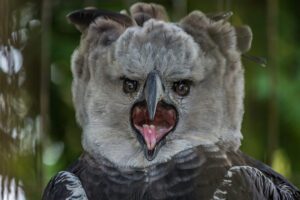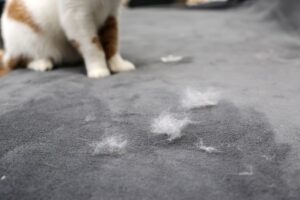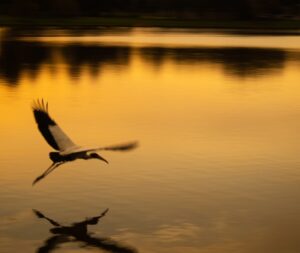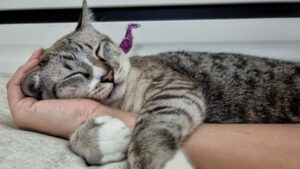We have to admit that the animal kingdom is full of surprises. Not only is it filled with a lot of impressive animals with surprising personality traits, appearances, and behaviors, but they can also manage to impress us with their strange routines.
In fact, when we are talking about various animals, most of the time people have a different view of their sleeping routine, namely that you wouldn’t think that there are animals that rest while standing up, with their eyes open, or even in a bubble, right? Of course, in our opinion, every creature should sleep to survive, but it seems that there are some species of animals that can live without sleeping at all. How crazy is that?!
The truth is that we know too little about the sleeping routine of animals, what methods they use to rest, and how this phenomenon affects their lives overall. So, let’s find out more info together! Here are the strangest animal sleeping habits that will definitely blow your mind!
Apes
Sleeping habit: Just like humans do
Followers of evolutionary theories will be happy to find out that apes sleep like humans, and they even make cozy ‘mattresses’ out of leaves. In other words, whether they prefer to build their own beds in trees or on the ground, they follow the same nest pattern, just like us.
There are some species of apes and monkeys that prefer to sleep while sitting on a tree branch because this way they can pay more attention to predators. However, it has been proven that great apes that managed to sleep more and rest better in tree platforms improved their cognitive functions, and their brains developed more. Well, maybe a few extra hours of sleep helped us become humans in the end.
Also, don’t forget that apes are our closest living relatives, or at least this is what researchers have shown us. According to animal experts, apes share about 98% of their DNA with humans. Nevertheless, it’s important to understand that apes are NOT monkeys, and they have different physical features, from the size of their brains to the shape of their noses.

Elephants and giraffes
Sleeping habit: they sleep standing up
Unlike apes, elephants and giraffes prefer to sleep standing up. Unfortunately, they have naturally developed this sleeping routine as a vigilant resting technique and also to be ready to run at any moment, especially when a predator threatens them. In general, animals are vulnerable when they sleep, and that’s why most of them hide to rest. However, due to their size, elephants and giraffes couldn’t hide; instead, they managed to sleep standing up.
Elephants and giraffes, as well as other animals that can sleep this way, such as horses, cows, and even birds, are endowed with a feature known as “stay apparatus,” which refers to a knee that locks and helps them sleep standing up. However, animal experts say that they can’t enter REM sleep while standing up, so they have to lie down from time to time.
If you like elephants, you might also like this statue.
Dolphins
Sleeping habit: with one eye open
Did you know that dolphins can’t sleep with their eyes closed or lying down? The explanation is that most marine mammals have to pay attention to predators and voluntarily breathe oxygen to survive; otherwise, they will drown. In this case, dolphins are warm-blooded creatures that need to keep moving to maintain a regular body temperature, so they have to sleep with one eye open to keep a part of the brain conscious.
To be more specific, to prevent suffocation or drowning, dolphins allow one-half of their brains to sleep at a time, while the other half remains active to enable the dolphin to breathe and see predators. For example, they close the left eye when the left half of the brain needs to rest, and vice versa.
This sleeping process can be found not only in cetaceans but also in migratory birds. Some people have recorded dolphins swimming in circles, and this is probably the explanation. This sleeping habit is also known as ‘unihemispheric sleep’ because only one brain hemisphere needs to sleep at a time, and they alternate them periodically.
Newborn orcas
Sleeping habit: they don’t sleep
According to animal experts, newborn orcas and other baby cetaceans can’t sleep for the first month after birth. Although adult orcas can usually sleep for up to 8 hours, when they are babies or new mothers, they won’t sleep at all.
New mothers can’t sleep because they have to protect their babies and need to be conscious to see them. Newborn orcas don’t have the muscle strength to sustain themselves and don’t have the necessary blubber to survive alone in the cold waters of the ocean, so they can’t sleep, as it’s important to keep up with their mothers, who protect their path.
That being said, to stay alive, newborn orcas have to stay in their mother’s slipstream, which they generate while they keep moving. So during this process, they can’t sleep as well.
As I said before with dolphins, orcas are actually cetaceans, and cetaceans will usually activate the unihemispheric sleep process to rest properly, but researchers believe that new orca mothers don’t do this because they have never been observed with an eye closed. Thus, they literally can’t sleep in the first month after giving birth.
Ducks
Sleeping habit: they sleep in a row using the unihemispheric sleep, but the duck in the middle rests normally
Just like other marine mammals mentioned above, ducks can use unihemispheric sleep as well, but they also have a strategy to protect themselves from predators and rest properly, namely to sleep in a row.
In general, the ducks on either side keep an eye open, as well as that hemisphere of the brain, to observe the predators and be vigilant, while the duck in the middle will close both eyes and rest both hemispheres of the brain. Of course, they repeat the process with each duck in the team.

Parrotfish
Sleeping habit: they sleep in a bubble
If the fact that they can change their gender whenever they want, as well as their color, doesn’t surprise you, then maybe the fact that they sleep in a bubble makes you place them on the list of the strangest creatures in the world. It seems that parrotfish can activate some special glands in the gills to secrete a kind of mucus that turns into a bubble around them.
The explanation is that they build this bubble to protect themselves from predators, such as eels. In addition, according to Alexandra Grutter from the University of Queensland, the bubble doesn’t protect the parrotfish from eels, but from the tiny mouthparts of parasites, known as gnathiid isopods, which suck blood during the night. Yet Grutter tested his theory and found that vulnerable parrotfish that weren’t in a bubble were attacked by these blood-sucking parasites, while those who slept in a cocoon were ignored.
Walruses
Sleeping habit: anywhere on land; in water: floating with their tusks into an ice floe to keep them drifting off
Studies have shown that walruses can sleep for up to 19 hours anywhere on land, but they also prefer to sleep in the water. Of course, just like any other marine mammal, walruses need oxygen to survive, even though they love to swim in the water. But they are intelligent animals and have discovered an effective method to be safe while sleeping in such conditions.
For example, it seems that walruses adore sleeping while floating with their tusks on an ice floe because this technique keeps them from drifting off. At the same time, their head stays above the water while the rest of their body enjoys floating. In general, these sleeping habits that involve water are short.
In general, walruses have a few natural predators, so they don’t have to worry about being eaten by them while they are floating, especially since the water is too cold for them.
You should also check out: Can You Believe People Keep These 7 Weird Animals as Pets?!













One Response
i enjoyed this reading, very informative. WHAT About lions and tigers and black bears how do they get sleep.